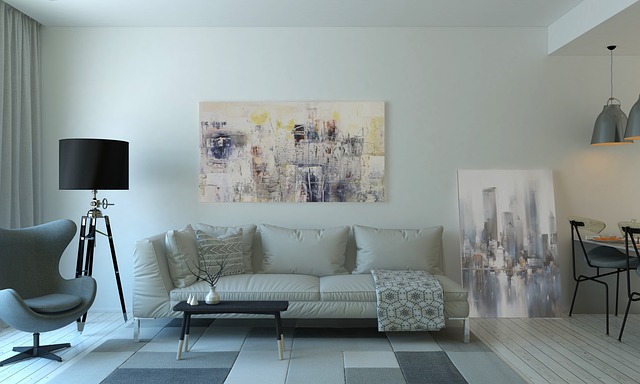The Art Deco movement, characterized by geometric patterns, polished metals, and intricate engravings, left a lasting impact on costume jewelry design in the early 20th century. Inspired by Derby silverware, this era's signature glamour is reflected in vibrant, handcrafted pieces that blend artistry with craftsmanship. Today, Derby silverware makes a modern comeback, with contemporary designers drawing inspiration from its intricate geometric patterns and historical significance to create unique, versatile accessories that seamlessly blend vintage charm with modern style. Art Deco costume jewelry continues to influence fashion, evident in statement necklaces and minimalist bracelets that bridge glamorous displays and everyday attire.
Uncover the glamorous world of Art Deco costume jewelry, a style that continues to captivate fashion enthusiasts. This era’s legacy is characterized by sparkling gems and bold designs, as seen in iconic pieces like Derby silverware. From historical roots to modern influence, this article explores the allure of Art Deco jewelry. Learn about its key elements, technical mastery, and how to source authentic pieces. Discover how to incorporate this timeless charm into your wardrobe for any occasion, paying homage to a stylish bygone era.
- Unveiling Art Deco's Sparkling Legacy: A Historical Perspective on Costume Jewelry
- The Allure of Derby Silver Ware: Crafting the Ultimate Art Deco Accessory
- Recognizing Key Elements: Decoding the Style and Symbols of Art Deco Jewelry
- From Red Carpets to Daily Wear: How Art Deco Influenced Modern Fashion
Unveiling Art Deco's Sparkling Legacy: A Historical Perspective on Costume Jewelry
Art Deco, a vibrant and opulent artistic movement that blossomed in the early 20th century, left an indelible mark on various aspects of design, including costume jewelry. This era, characterized by sleek lines, geometric patterns, and a blend of luxurious materials, continues to captivate fashion enthusiasts even today. The legacy of Art Deco can be seen shimmering in costume jewelry pieces that emulate the movement’s signature spark and glamour.
Costume jewelry from this period, often crafted with precision and attention to detail, incorporates elements such as polished metals, intricate engravings, and vibrant gems. Deriving inspiration from the opulence of Derby silverware, these jewelry designs showcase a harmonious fusion of artistry and craftsmanship. The Art Deco aesthetic, with its emphasis on symmetry and elegance, has stood the test of time, ensuring that costume jewelry from this era remains a sought-after treasure for collectors and fashion aficionados alike.
The Allure of Derby Silver Ware: Crafting the Ultimate Art Deco Accessory
Derby silverware, with its sleek lines and geometric designs, is a quintessential representation of Art Deco aesthetics. This elegant style, popular in the 1920s and 30s, has experienced a resurgence in recent times among fashion enthusiasts who appreciate the era’s glamour and sophistication. Crafted from sterling silver, Derby jewelry pieces often feature intricate engravings and distinctive motifs that pay homage to the rich heritage of Art Deco design.
The allure of Derby silverware lies not only in its visual appeal but also in its versatility as an accessory. Brooches, pins, and pendants adorned with these silver pieces can elevate any outfit, adding a touch of timeless elegance and historical significance. Today’s fashion designers often draw inspiration from this era, creating modern interpretations that seamlessly blend vintage charm with contemporary style, making Derby silverware an indispensable choice for those who love to experiment with unique and eye-catching accessories.
Recognizing Key Elements: Decoding the Style and Symbols of Art Deco Jewelry
Art Deco costume jewelry is characterized by its sleek and sophisticated design, reflecting the aesthetic movements of the 1920s and 1930s. To recognize key elements of this style, one must decode its symbols and motifs. The Art Deco period celebrated modern industrial designs, often incorporating geometric shapes like triangles, chevrons, and zigzags, which can be seen in the intricate settings of costume jewelry.
Derby silver ware, a signature pattern of the era, is a prime example of these geometric patterns. This distinctive style is characterized by linear motifs that create a visual dance on the jewelry’s surface. The use of precious and semi-precious stones, such as diamonds, sapphires, and rubies, further enhances the glamour associated with Art Deco jewelry. Symbols like the “fan,” “tulip,” and “spade” also hold significance, representing elegance, growth, and stability respectively, adding depth to the aesthetic appeal of this era’s jewelry.
From Red Carpets to Daily Wear: How Art Deco Influenced Modern Fashion
Art Deco, with its bold geometric patterns and luxurious materials, initially made its mark on the fashion world through iconic events like the Derby Silver Ware competition. This influential design movement went beyond mere aesthetics; it permeated into everyday wear. The glamour associated with red carpets and high society soon trickled down, making Art Deco a popular choice for both formal and casual attire.
Modern fashion enthusiasts can attest to the enduring appeal of Art Deco. Its distinctive style is now easily recognizable in contemporary jewelry, accessories, and even clothing designs. From statement necklaces adorned with dramatic drops to sleek, minimalist bracelets, Art Deco-inspired costume jewelry has become a staple on the fashion scene. This seamless transition from glamorous displays to everyday wear showcases how Art Deco continues to shape and inspire modern fashion choices.
Art Deco-inspired costume jewelry continues to captivate fashion enthusiasts, offering a glimpse into a glamorous past. From the historical legacy of sparkling gems to modern interpretations like Derby silverware, this style has left an indelible mark on the fashion world. By recognizing key elements and symbols, wearers can decode the allure and embrace the timeless elegance of Art Deco in their everyday ensembles, bridging the gap between red carpets and daily wear.
